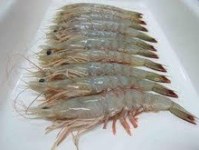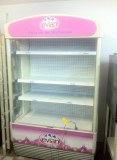LWIR lens plays a critical role in thermal imaging surveillance applications, beyond night vision capability, critical targets differentiation in poor vision conditions is considered the most practical attribute in homeland security and defense market segmentation.
Compared to the cooled system, which focal plane array detector kept at -70℃ needs cooling support, uncooled cameras are much more affordable. Aside from superior sensitivity of the cooling system, the uncooled system is dominating the market for surveillance and automobile segmentation due to its cost.
On the other hand, in short distance surveillance applications, the uncooled system is the best choice, but the cameras have to be equipped with objectives that have the larger focal length to maintain resolution. Meanwhile, the F number will increase due to the same entrance aperture, which will dramatically reduce the amount of light for detection. In return, the uncooled system becomes insensitive. Thus, the cost is driven by increasing the aperture (larger lens), eventually, drives uncooled LWIR solution more expensive than cooled version.
Germanium is frequently used for LWIR lenses as its high refractive index in LWIR wave band; However, Germanium has large thermal drift which causes expected defocus with temperature change. Hyperion Optics provides sophisticated design that balance defocus and secure stable performance in consideration of defocusing attributes of the lens, by using ZnSe (8 times better thermal defocusing compare to Germanium)
In LWIR design, Hyperion Optics optical designers also conduct thorough calculation of what happens to the housing with the impact of thermal expansion. Aluminum is frequently used as housing, for example, a 20mm long aluminum housing will increase by 28 microns if the temperature increases for 60℃, the 28-micron change can be considered the same as the LWIR system's depth of focus.
At Hyperion Optics, we conduct both passive mechanical and passive optical solutions for the best to eliminate the thermal impact in thermalization system development. For a passive mechanical solution, we develop inner and outer cell separated by a spacer, geometrically precise machine the spacer with the right material to attain a thermal expansion equal and opposite to the combined effect of the lenses and rest of the housing over the whole temperature range. The spacer pushes the inner cell back to the right position to keep the lens in focus. Find out more by talking or writing to us for your current LWIR needs for our passive optical solution for your own LRIP Optics Project.
Our advantage of LWIR optics lens design and manufacturing:
Integration of ZnSe conic surface
The combination of refractive and diffractive lenses for maintaining low F number and Athermal pre-parties without mechanical compensation need.
Chalcogenide material can be combined in HYP design and manufacturing to approach the expected compensation for thermal expansion.
Localisation : BaoXiang Road#6, Nanjing, China, 210007 nanjing,
Personne à contacter : Li Boxin , +86 25 86626311







